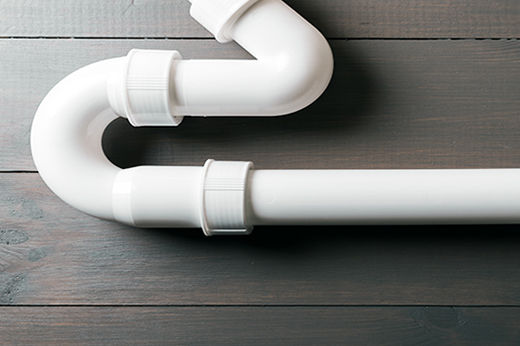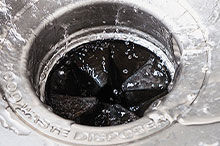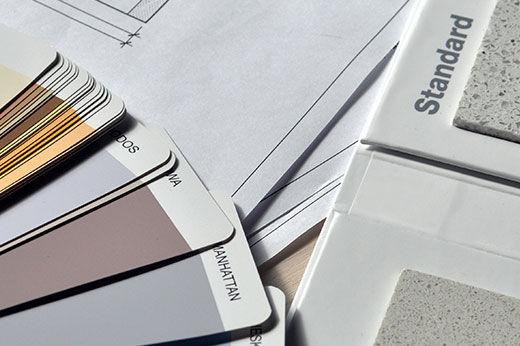While do-it-yourself projects can be fun and fulfilling, there is always a potential for personal injury or property damage. We strongly suggest that any project beyond your abilities be left to licensed professionals such as electricians, plumbers, and carpenters. Any action you take upon the information on this website is strictly at your own risk, and we assume no responsibility or liability for the contents of this article.
How to Troubleshoot a Dishwasher
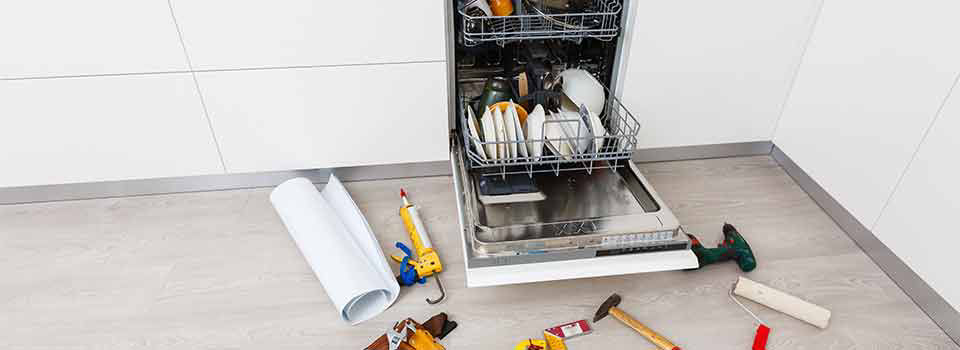
Have you ever noticed your dishes aren’t getting clean after running them through the dishwasher? Maybe you’ve noticed your dishwasher is leaking, or just not working properly. It’s frustrating - we get it. Fortunately, there are a few things you can do yourself before calling a professional out to have a look. Here’s a list of some common dishwasher issues, and how you can troubleshoot and repair them.
Note: You should always disconnect the power supply to your dishwasher before attempting to inspect it or make repairs. Failure to do so could result in potential injury.
Dishwasher won’t start

If your dishwasher won’t start there are a few things that could be wrong, but most of them are simple to fix. You can follow the steps below to troubleshoot a dishwasher that won’t start:
- Check the power: Locate the dishwasher plug, usually behind a cabinet or under the sink. Make sure it is plugged in all the way and is damage-free. You’ll also want to check your home’s circuit breaker box to ensure you have not blown a fuse.
- Ensure the door is latched: Make sure your dishwasher door is fully closed and that nothing is blocking its way. If your machine has a physical lock or latch, make sure it has been secured.
- Make sure the child-lock is not enabled: Some dishwashers have a child-lock feature preventing the use of buttons and starting. Check your owner’s manual to ensure it’s off.
- Check the control panel: Locate your control panel to see if there is any damage. You can reset your machine by pressing a reset button or consulting your owner’s manual. If the control panel seems to be damage-free, use a multimeter to verify the panel and electronic timer control are both receiving an adequate power supply.
- Examine the internal components: Some internal parts like the motor start relay, thermal fuse, and drive motor, may be faulty. Check your owner’s manual to locate these parts on your specific dishwasher model and ensure they are free of any damage.
Dishwasher is leaking from bottom onto floor
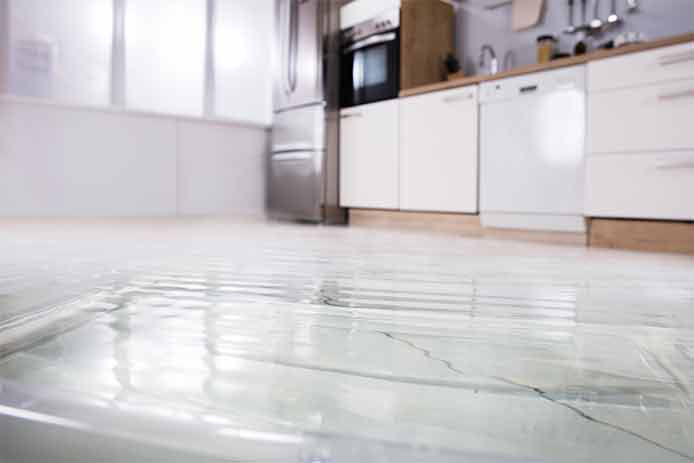
It’s never a good thing when you see a dishwasher leaking. While this can be an easy fix, it’s best to do so right away. If your dishwasher is leaking here are a few reasons why it could be happening, and how to address them.
- Clogged filter: Your dishwasher should have a filter located at the bottom of the basin. Remove the filter and clean any food or debris that may be stuck on it. Once clean you can reinsert the filter and you should be good to go!
- Faulty water inlet valve: if the valve pumping water into your machine is malfunctioning, you’ll notice an intense leak. Remove the bottom plate on your dishwasher door to search for signs of leakage. If there is a leak from the valve, it will need to be replaced.
- Bad door panel seal: Your dishwasher has a watertight seal lining inside the door. Over time, this can wear out, loosen, and tear. If this is the case, remove the seal and replace it with a new one.
- Broken water pump system: If your dishwasher is leaking but no water is reaching the inside of the machine, chances are your water pump will need replaced. If only a little bit of water is entering the machine, try checking for loose connections or damaged clamps on your dishwasher hose.
Dishwasher not filling
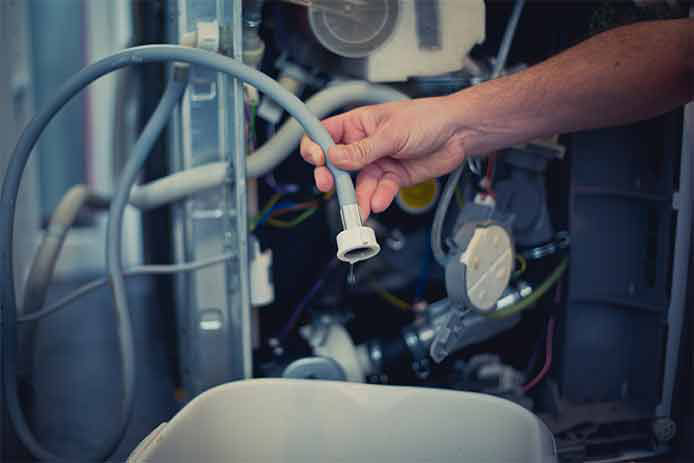
If your dishwasher isn’t filling, you’re not going to have much luck getting clean dishes. If the machine doesn’t fill with water, here are a few things that may be causing the issue, and how you can fix it:
- Defective water inlet valve: Inspect the water inlet valve located behind the access panel inside the lower left side of your machine. If the valve is damaged or cracked, it will need to be replaced with a new one.
- Malfunctioning float switch: To check this switch, locate the float at the bottom of the dishwasher basin and check that the float arm triggers the switch when raised to the appropriate height. If it doesn’t, your switch may need replaced.
- Broken door switch: Your dishwasher has a switch preventing it from running while the door is open. Access the inner door panel to examine the switch and ensure it is functioning properly.
- Damaged water supply line: Check your machine’s water line under the sink to ensure it is properly connected and free of kinks and that the tap is turned to the open position.
Dishwasher not draining

If you open your dishwasher and notice a puddle of water in the bottom, it’s time to troubleshoot. Generally, these fixes are pretty simple, but it could be a variety of issues. If your dishwasher isn’t draining properly, try doing the following:
- Run your garbage disposal: If you have a garbage disposal and your dishwasher drains through it, the clog may be from food debris in your disposal.
- Remove any standing water: If you don’t have a garbage disposal or running it didn’t solve the issue, you should remove any water. Water can be easily removed using absorbent towels, sponges, or a wet/dry vacuum.
- Clean the air gap: If your dishwasher connects to an air gap, unscrew it and clean out any debris with a stiff brush. Then re-insert the air gap and run a new cycle.
- Clean the drain filter: Locate the filter in the bottom of the basin, unscrew it, and clean any gunk that may be on it.
- Check the drain hose for kinks or clogs: Locate the drain hose under the sink and undo any kinks. If your drain hose is damaged, you may need to replace it.
Dishes are still dirty

Have you ever run a load of dishes just to find they’re still dirty? If so, there are a few simple things you can do to solve this issue.
- Clean the drain filter: Locate the filter in the bottom of the basin, unscrew it, and clean any gunk that may be on it.
- Clean the inside of your dishwasher: If your machine has any grease buildup or scum, try cleaning it with a dishwasher cleaner, or adding vinegar to an empty cycle.
- Check the spray arms for clogs: Try wiping down the spray arms and using a toothpick to dislodge any clogs in the spray holes.
- Increase water temperature: Your dishwasher needs to be able to run water hot enough to get the job done. Some have the capability to heat water to the ideal temperature. If yours doesn’t have this feature, you may need to increase the temperature on your water heater to at least 120 degrees Fahrenheit.
- Rinse dishes before loading: This takes just an extra moment or two and helps prevent grease buildup and clogs in your dishwasher, resulting in cleaner dishes.
- Add a rinse agent: A rinse aid or dish drying agent can help your dishwasher run better and keep your dishes clean.
- Use a quality detergent: Be sure you are using the best dishwasher detergent for your machine, to help get dishes clean and keep your machine running properly.
Dishwasher not drying dishes
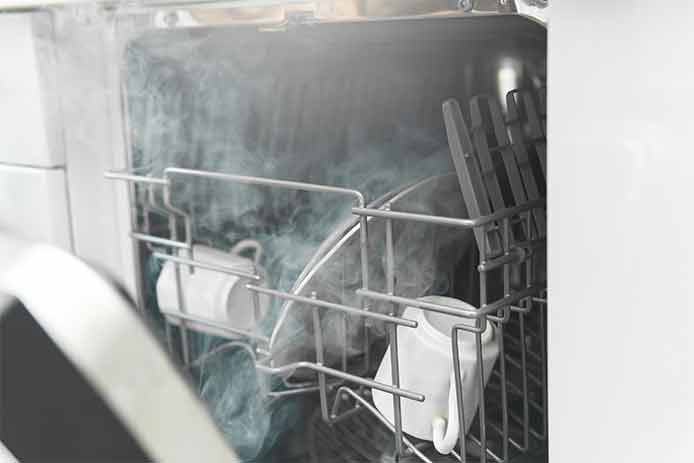
If you’ve ever had to dry your dishes when removing them from the dishwasher then you understand the frustration. If your dishwasher is struggling to dry dishes, here are a few things you can try:
- Check your cycle settings: Most quick cycles or energy-efficient settings will forego a drying process. Look for a cycle or button to activate a “heated dry” feature.
- Add a rinse agent: A rinse aid or dish drying agent will not only help with cleaner dishes but will also help your dishwasher in the drying process.
- Check the heating element: The easiest way to check your dishwasher’s heating element is to run a load of dishes. If once the cycle has finished your dishes don’t feel warm, you may need to replace the heating element.
Dishwasher smells bad
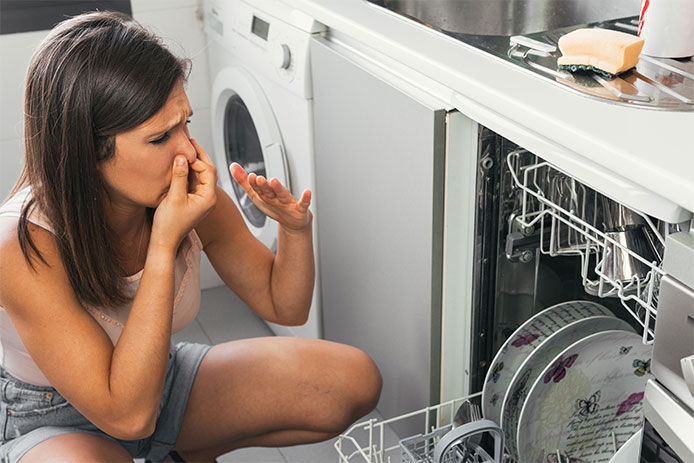
A smelly dishwasher is definitely a nuisance. Fortunately, it’s an easy fix. Usually caused by a clogged filter, food residue, or a dirty gasket, a simple cleaning should do the trick. Follow these steps to deodorize your dishwasher:
- Starting with an empty dishwasher, remove and clean the filter of any debris.
- Add a dishwasher cleaner or about 2 cups of vinegar to your dishwasher and run a cleaning cycle to loosen any grease buildup or food residue.
- Clean your dishwasher walls and gaskets with a warm soapy sponge and wipe them dry with a clean towel.
If your dishwasher needs a deeper clean, learn how to deep clean kitchen appliances.
Dishwasher too noisy

If you’ve ever noticed your dishwasher is louder than normal, there’s no need to panic. Chances are it’s a quick fix. Here’s what to do if your dishwasher is making excessive noise.
- Buzzing or grinding noise: A light buzzing is normal when your dishwasher is draining. If it’s louder than normal, remove the lower dish rack, spray arm, and drain filter. This will reveal the dishwasher pump and impeller. Remove any debris or foreign objects and replace all the pieces as normal.
- Rattling and knocking: This sound usually means the spray arm is hitting dishes or utensils. Readjust the way your dishes are loaded in the machine. Consult your dishwasher’s owner manual for the best way to load dishes in your specific model.
Now that you know how to properly troubleshoot your dishwasher, you can tackle whatever issues may arise. If after troubleshooting, you still can’t fix the issue, or you are at all unsure about working on your dishwasher, call a professional to come inspect and repair your machine.
